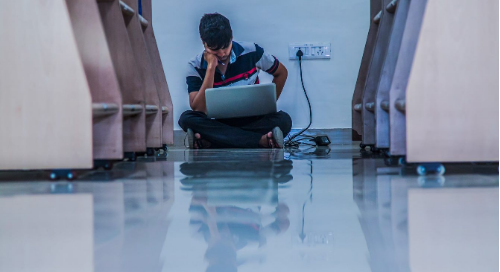growing-trust-in-peer-review-with-the-better-peer-review-initiative
September 22, 2020
We are living in what has been described as an ‘infodemic’1 – not just an overwhelming mass of new data and new information to absorb and process, but an increasing difficulty to sort out the reliable from the unreliable, and the validated from the non-validated.
It’s in this context that this year’s Peer Review Week takes place with the highly topical theme of ‘Trust’. The website2 lists a number of events that are taking place, and on Twitter you can follow @PeerRevWeek, #PeerRevWeek20, and #TrustinPeerReview. Wiley will be publishing content daily at https://www.wiley.com/network/researchers/peer-review-week-2020. Inasmuch as peer review is the primary mechanism for enabling research to be scrutinized by experts in the field, it is the most compelling method for engendering confidence in published research and enabling those who read it to trust what it says. Weaken the foundation of peer review, and you risk the research collapsing. And in a worst-case scenario, this will undermine the confidence that policy-makers, governments, and the general public will have in scientific endeavors. The current Covid-19 pandemic has driven this home more acutely than ever, as governments are ‘driven by the science’ when devising lockdown policies for which they need the public’s compliance. And it’s peer review that distinguishes validated science from the preliminary research posted on preprint servers, which may or may not go on to be peer reviewed and published3.
It’s therefore more crucial than ever that publishers and editors reinforce high standards of quality in the peer review process, and indeed not just in the peer review process but in the whole editorial and peer review decision-making process that transforms preliminary research into a published article. This motivation lay behind the creation of our ‘Better Peer Review’ initiative at Wiley4, which evolved to ensure that high standards of editorial and peer review processes remain meaningful, accountable, and transparent for both editors and researchers alike.
Focusing on five ‘essential areas’ – integrity, ethics, fairness, usefulness, and timeliness – we devised a self-assessment tool to enable journal teams, comprising publishers, editors, and editorial office staff, to reflect on and improve the editorial and peer review processes for their journals. Underpinning all five areas is the principle of transparency: these processes need to be transparent if they are to instill confidence in those who benefit from them.
After piloting our self-assessment on a small group of journals, in response to which we refined the tool, we published the details and made the tool available publicly5. Any journal is welcome to use the self-assessment and evaluate its processes. But we wanted also to examine its effectiveness at helping journals reflect on and, more importantly, improve their processes. After all, the tool has no value if it only facilitates an understanding of the status quo; it needs also to help journals move on and undertake continuous improvement of their performance. We therefore conducted a follow-up study looking at the outcomes for 132 journals who completed the self-assessment.

There are salutary lessons here. Journals tend to think they are more transparent than they are in reality, but there is no shame in owning that standards can be improved and then making improvements where needed. Our Better Peer Review website4 provides specific guidance about how to make those changes. For example, in response to the self-assessment question ‘Do you explain to authors, reviewers, editors, and readers how manuscripts are evaluated?’, the following advice is given:
‘The manuscript evaluation process should be explained in author submission guidelines and reviewer invitation emails. Editors should be made aware of the process in training. Editorials detailing the process can help to explain the process to readers, authors and reviewers and can be linked to from author guidelines.’
It’s also important that journals are consistent in conveying their policies: for example, peer reviewers should be advised to review articles according to the standards to which authors are being held. This is critical for the integrity of the whole process.
If your journal has not yet undertaken the self-assessment, please do consider doing so and reflecting on how to improve your editorial and peer review processes. Please contact betterpeerreview@wiley.com to request a link to the self-assessment. After all, the stakes in providing subpar processes are high: it is all about generating trust in what we publish.
References
1. T. Ghebreyesus, Speech at 2020 Munich Security Conference, quoted at https://www.who.int/dg/speeches/detail/munich-security-conference. Accessed September 8, 2020.
2. Peer Review Week website: https://peerreviewweek.wordpress.com/. Accessed September 8, 2020.
3. Preprint servers are posting cautionary notes, but most only in the context of Covid-19 research, to remind readers that preprints are not the same as peer reviewed articles. See, for example, https://authorea.com/browse-all?institution_id=20386&tags=%5B%22covid-19%22%5D; https://connect.biorxiv.org/relate/content/181; and https://www.medrxiv.org/ (all accessed September 8, 2020).
4. What is Better Peer Review? https://secure.wiley.com/better-peer-review. Accessed September 8, 2020.
5. H. Allen, A. Cury, T. Gaston, C. Graf, H. Wakley and M. Willis. What does better peer review look like? Underlying principles and recommendations for better practice. Learned Publishing, 32 (2019): 163-175. DOI:10.1002/leap.1222
6. T. Gaston, C. Graf, E. Morris, E. Moylan, S. Pedder and M. Willis. What does better peer review look like? Findings from 132 journals completing a self-assessment exercise. Authorea [preprint]. September 13, 2019. DOI: 10.22541/au.156839988.89111245













